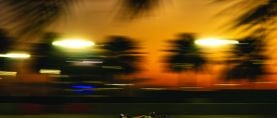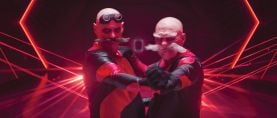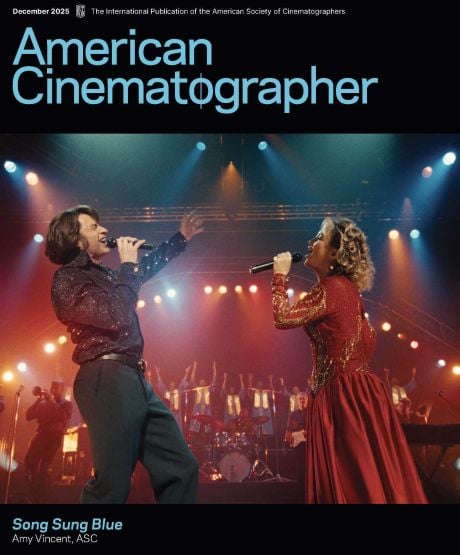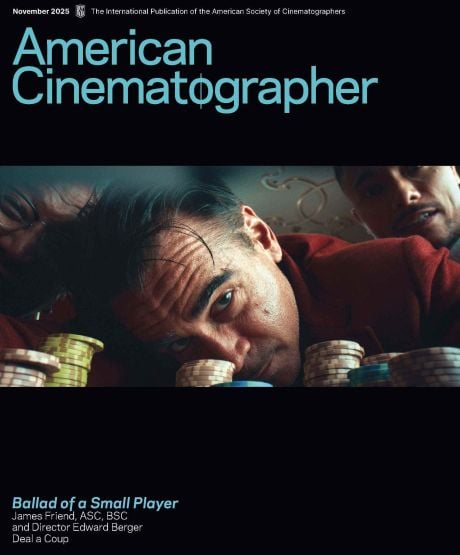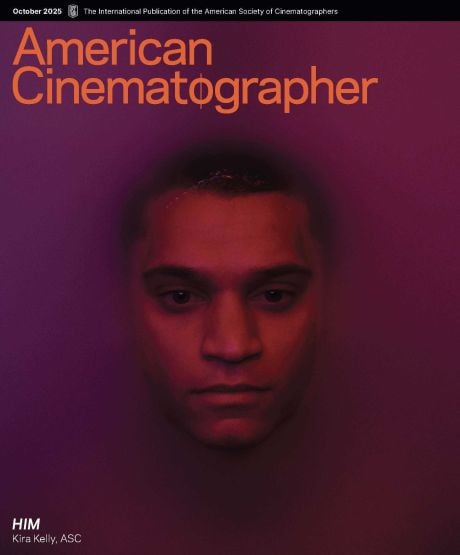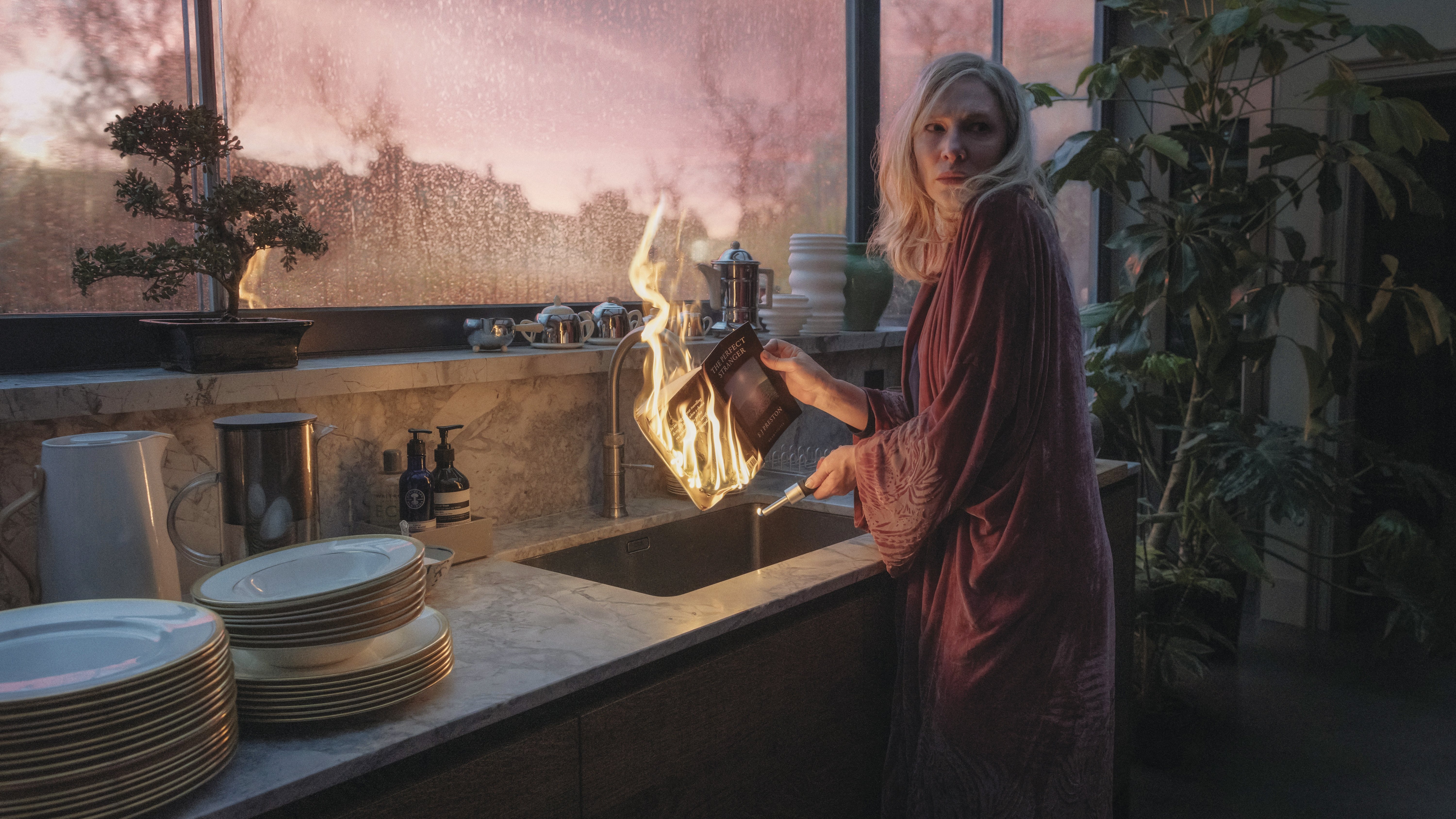
Disclaimer: One Vision, Two Paths
Society members Bruno Delbonnel and Emmanuel Lubezki bring distinct perspectives to director Alfonso Cuarón’s ASC Award-nominated series.
Unit photography by Sanja Bucko and Maria Lax. All photos and frame captures courtesy of Apple TV Plus
The miniseries Disclaimer presented co-directors of photography Bruno Delbonnel, ASC, AFC and Emmanuel “Chivo” Lubezki, ASC, AMC with an unusual creative proposition: Photograph two parallel narrative threads in two deliberately contrasting ways. Adapted from Renée Knight’s novel of the same name, the Apple TV Plus production focuses on two characters from disparate backgrounds: Catherine (Cate Blanchett), a renowned journalist with a devoted husband, Robert (Sacha Baron Cohen), and Stephen (Kevin Kline), an English teacher and widower. Their shared history is gradually revealed.
Lubezki differentiates Disclaimer from other series in another way: “It’s one direction, one vision. It’s an auteur piece. A lot of series have a showrunner, a lot of directors, a lot of cinematographers, and so on. This one has a single author.”
That author, Lubezki’s longtime collaborator Alfonso Cuarón, wrote a script that was unusually specific about the cinematography, “even describing the color temperature of the light streaming through the window, how it changed during the shot, and why this was important,” Lubezki says. “It’s not just aesthetics. It’s very deliberate. It was a particularly interesting script because it was so different to any other.”
“I thought this would be a way for me to go back to school and watch Bruno work. A cinematographer is always learning, but, normally, you don’t have the opportunity to learn from other cinematographers.”
— Emmanuel Lubezki, ASC, AMC
Two Cinematographers
Lubezki recalls “a goosebump moment” when he and Cuarón began discussing how two cinematographers might collaborate on the piece: “I said, ‘If I had a pick, I would say Bruno,’ and he said, ‘That’s exactly what I would have said.’ In a very personal way, I thought this would be a great moment for me to learn from a master like Bruno.”
The filmmakers called Delbonnel and explained that they wanted “a second cinematographer based on the idea of having a different aesthetic for each character,” Delbonnel recalls. “Chivo was going to do everything with Cate Blanchett, and I would shoot everything with Kevin Kline and Sacha Baron Cohen. The idea was that there’s a different language for the three main characters comprising camerawork, light and composition. The question for each scene was, ‘Whose language is it?’”
Once production commenced, however, practical considerations led to a more mixed division of labor. Delbonnel explains, “I did everything with Kevin and I did some of Cate, but not many [scenes], and I did very few with Sacha. When Cate is having a discussion with Sacha, it was Chivo, but when Sacha was alone, it was me.
“I didn’t watch Chivo’s dailies, and he didn’t see what I was doing. He never really visited my set, and I never visited his. The only person who could tell us [what the other was doing] was Alfonso.”
— Bruno Delbonnel, ASC, AFC
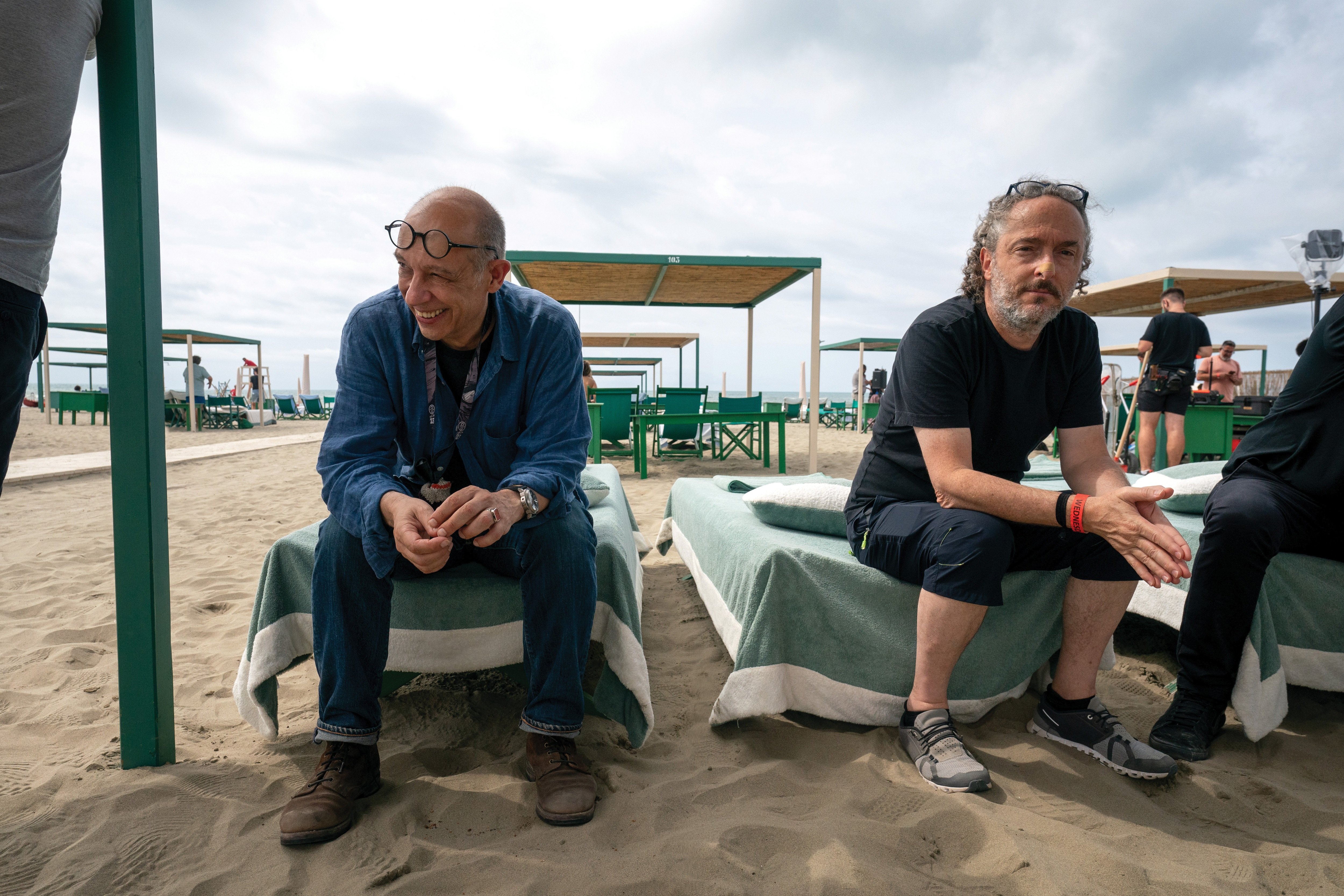
“We were supposed to shoot every scene [to suit] each character. For example, when Cate goes to the hospital, it was supposed to be Chivo, and when Kevin goes to the [same] hospital, it was supposed to be me. If both of them were in the same scene and the same frame, which happens a couple of times, the first idea was to shoot from both points of view, therefore shooting the scene twice. It was very complicated and time-consuming. Alfonso decided which point of view he was most interested in: Cate’s or Kevin’s. Then, we’d shoot only one point of view.”
Lubezki clarifies that the approach to Catherine is “in the second person, not first or third person, which is the usual approach. It’s very objective — as if someone is looking at her, criticizing her or analyzing her — and the camera is working to accent that. We’re not moving toward her face to see where she’s looking; we just see her from our perspective as the audience, and from the perspective of whomever is talking about her. We also used wider and softer lenses for her character, but this ‘objective’ look had more to do with tempo: There are more long master shots, and our camera moves are much more fluid, which [allowed for] fewer cuts.”
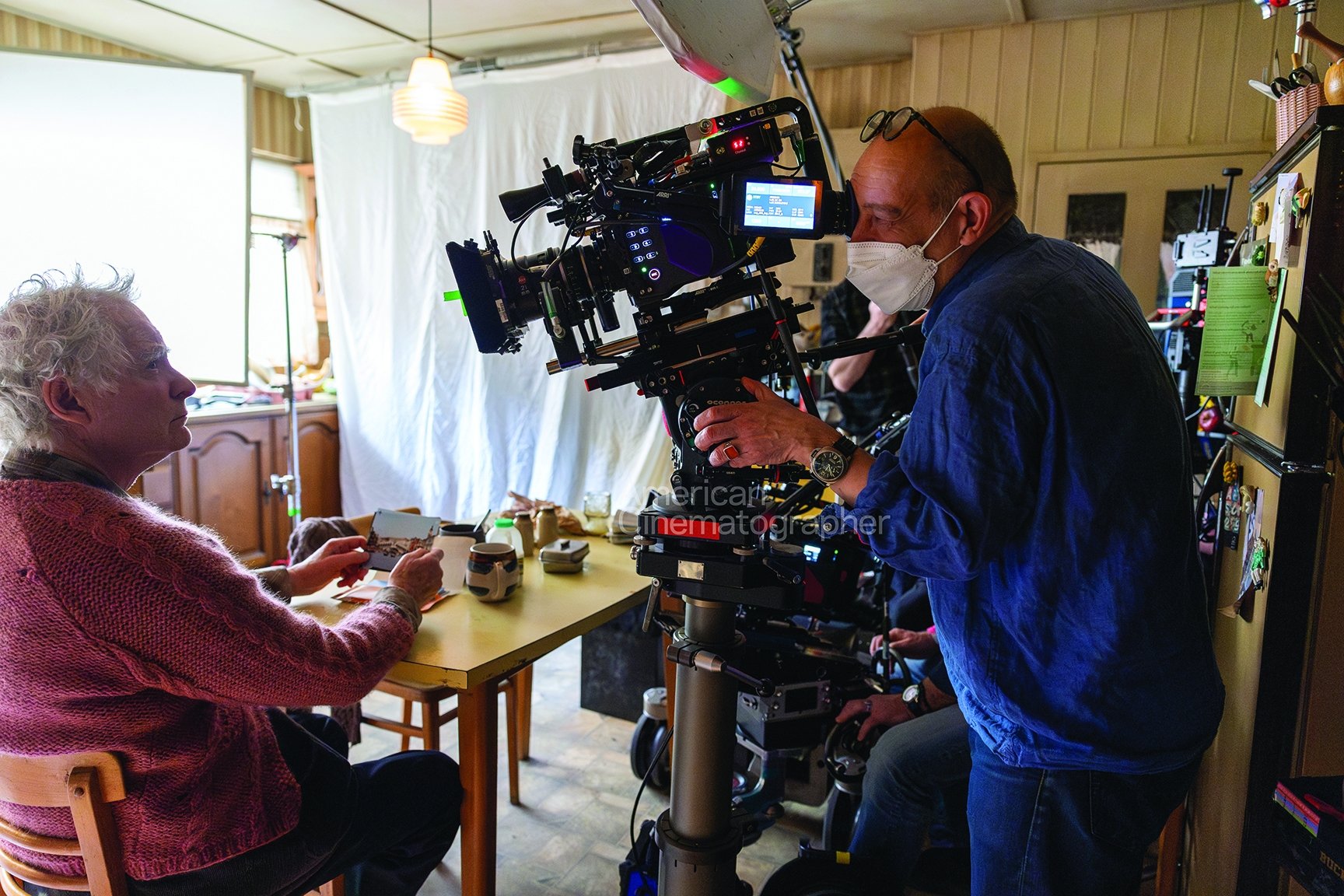
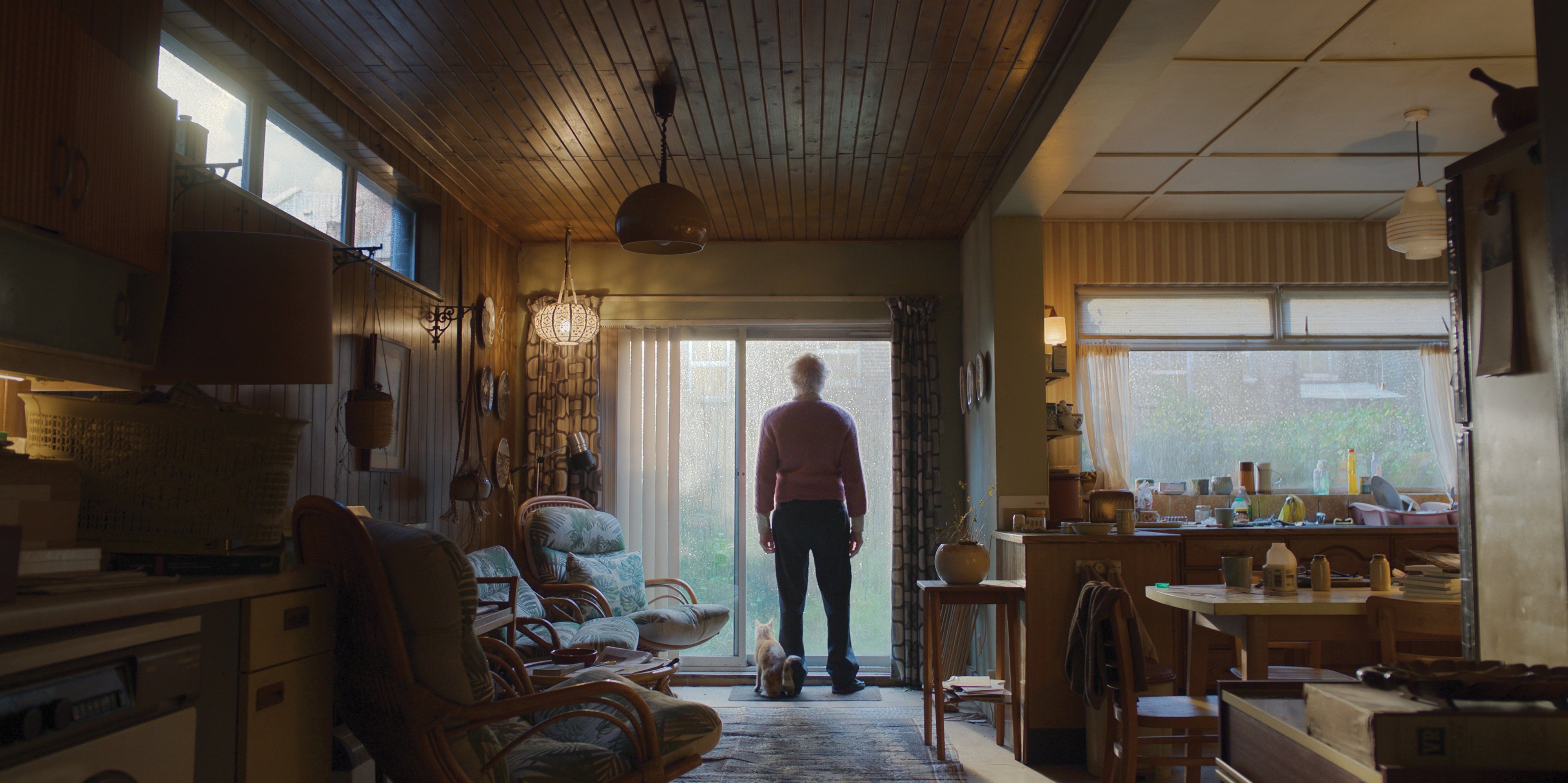
Conversely, the world of Stephen is presented with far greater subjectivity. “Alfonso wanted everything with Stephen to be through his point of view,” Delbonnel notes. “If the camera is moving, it’s because Stephen is moving. As opposed to Catherine’s camera language, the camera is Stephen’s eyes, with a lot of static shots, close-ups and details.”
Most of Disclaimer’s 240-day shoot took place in London. Delbonnel’s key crew consisted of gaffer Harry Wiggins, 1st AC Julian Bucknall, DIT Peter Marsden and camera operator Des Whelan; Lubezki’s core team comprised gaffers Wayne Shields and Chuck Finch, 1st AC Mateo Bourdieu and desk operator Ed Kirby.
In choosing lenses for their respective sec¬tions of the show, Lubezki learned “that both Bruno and I love [Arri/Zeiss] Master Primes.” Adds Delbonnel, “I usually use Cooke lenses, but for this project, the Master Primes seemed, to me, more appropriate.” To avoid using the same glass, Lubezki opted to shoot primarily with Leitz Summilux-Cs — “the same lenses I used for Birdman [AC Dec. ’14] and for parts of The Revenant [AC Jan. ’16], which I just love. We both adore the Master Primes because we like their quality of contrast, their sharpness and their capability in low-light situations. But the Summilux-Cs are softer, so they made Catherine’s story feel a little less contrasty and less ‘biting’ in terms of sharpness. They give the sense of having a little more glass, they flare differently, and they have a smoother contrast, which makes skin feel smoother.”
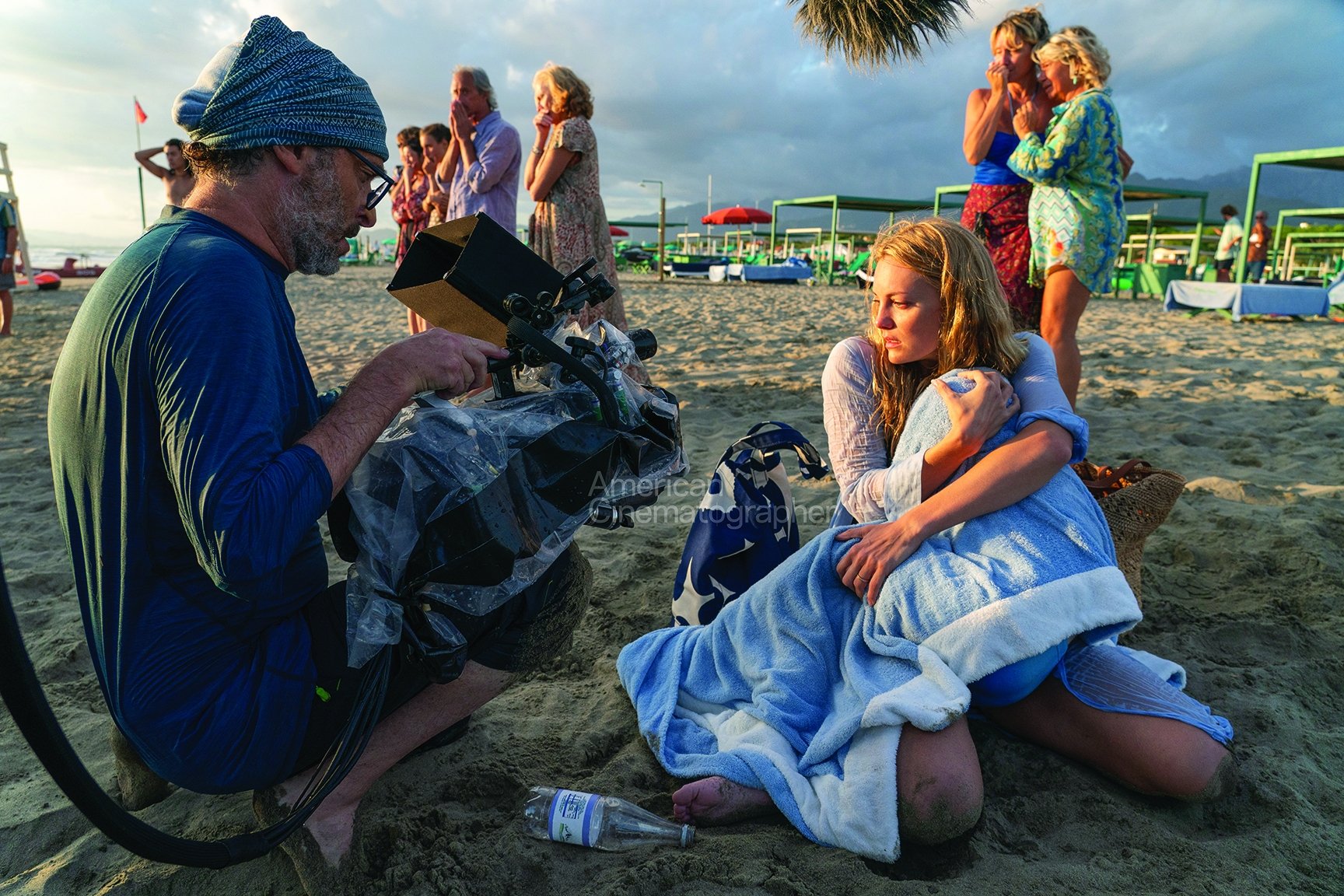
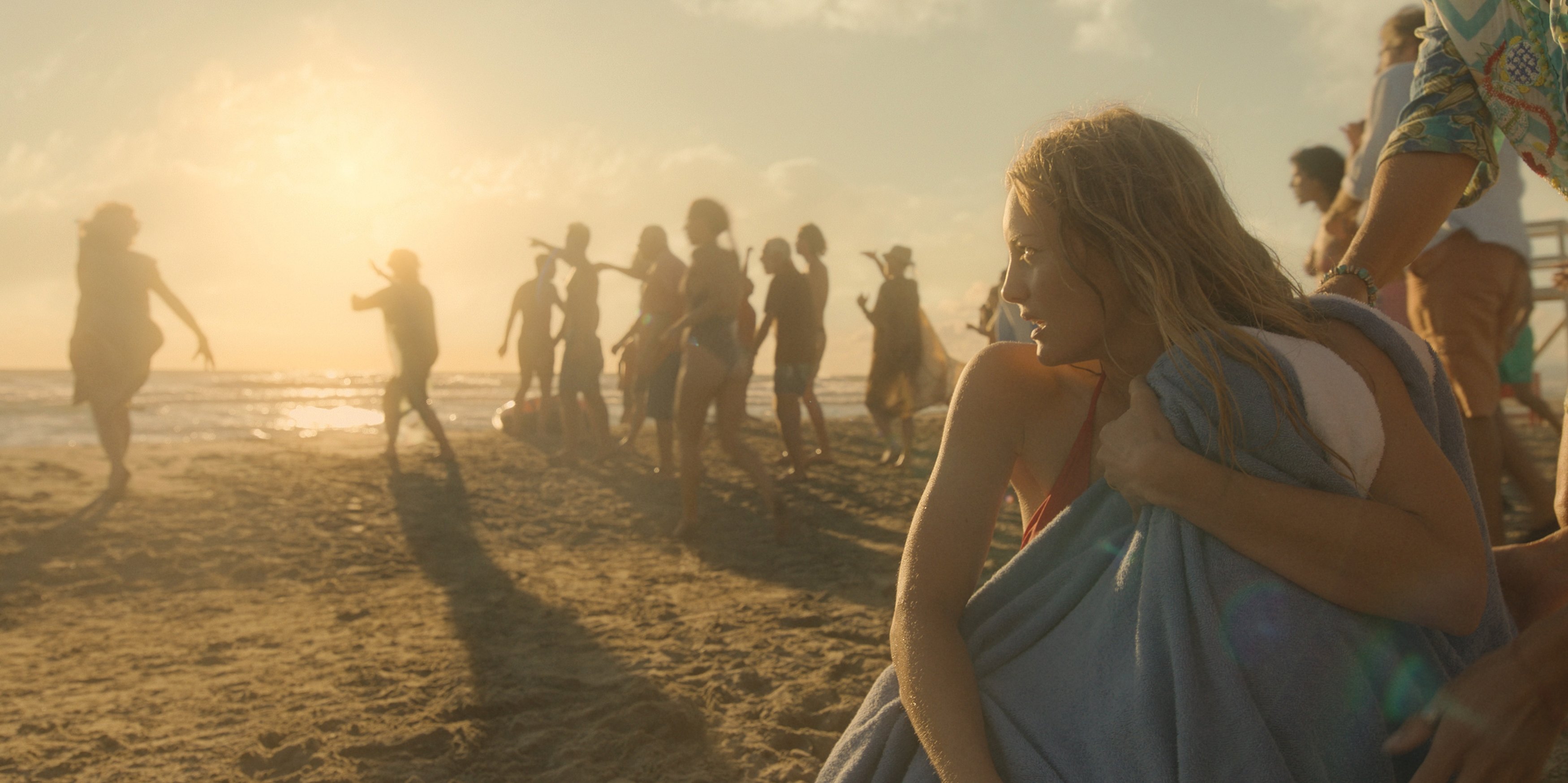
For parts of the story centered on husband Robert, Lubezki used a combination of Angénieux and Fujinon zoom lenses. He relates that Cuarón was not keen to shoot with a large sensor, and a fortuitous development occurred just in time to provide an alternative. “Cuarón had finished Roma with the [Arri Rental] Alexa 65 [AC Jan. ’19] and didn’t want to have the same issues with depth. Bruno and I were at Arri in London, and they said, ‘You guys are a bit too early, we almost have a new camera.’ We pressured them [to] let us see it, and they said, ‘What’s the project?’ At that time, the title of the series was Augustus — named after the hotel in Italy — so we said, ‘We’re shooting Augustus with Cuarón.’ Two days later, they called back and said, ‘We want you to use the Alexa 35 even if it’s not totally finished. They were so excited … [I think] they thought we were shooting some incredible epic, some Roman Empire thing! So, we shot with these new cameras, which are absolutely incredible.”
Separate Worlds
The cinematographers deliberately avoided unnecessary involvement in each other’s work. “I didn’t watch Chivo’s dailies, and he didn’t see what I was doing,” Delbonnel says. “He never really visited my set, and I never visited his. The only person who could tell us [what the other was doing] was Alfonso.”
Occasionally, this provoked concern. Delbonnel continues, “There’s a scene during which Stephen sends text messages to Catherine’s son, who answers back. It’s rain¬ing outside, and at the end of the scene, the sun appears through clouds. Chivo was shoot¬ing Catherine’s son’s side and I was shooting
Stephen’s. Chivo didn’t have the same approach to what a rainy day would look like. We were using different color temperatures; mine was more contrasty, more dense and with less fill light. So, the challenge was to make these two different approaches to the same moment in time believable, and not disconnected.”
Such an atypical way of working, Lubezki suggests, could only be made possible by someone of Cuarón’s experience. “Alfonso knows every tool of the toolbox perfectly. He was a sound mixer, a boom man, a cameraman. If you bring ideas that make sense, he likes to incorporate them in the workflow. He also described the lighting of the set in the script very clearly, including the color temperature of exterior lighting in different parts of the story, and how that related to what Catherine was experiencing. So, when it says in the script that it’s early morning and the sky is still pink, and you see magenta reflecting in the kitchen counter-top, we designed everything to accomplish that. Most of the show is on a set, so we always did things with lighting, or when we were designing the sets, that allowed things to look the way they look.”
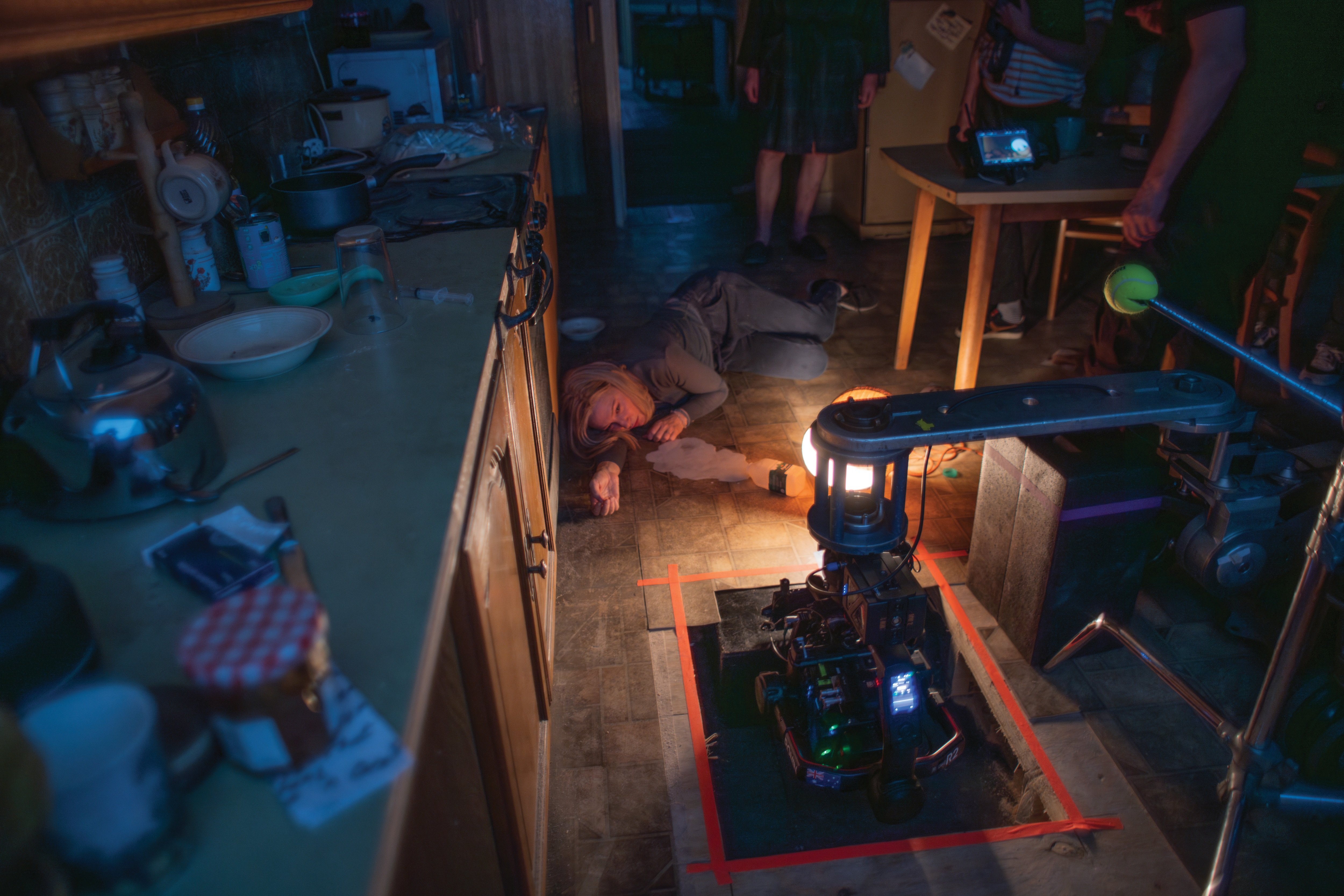
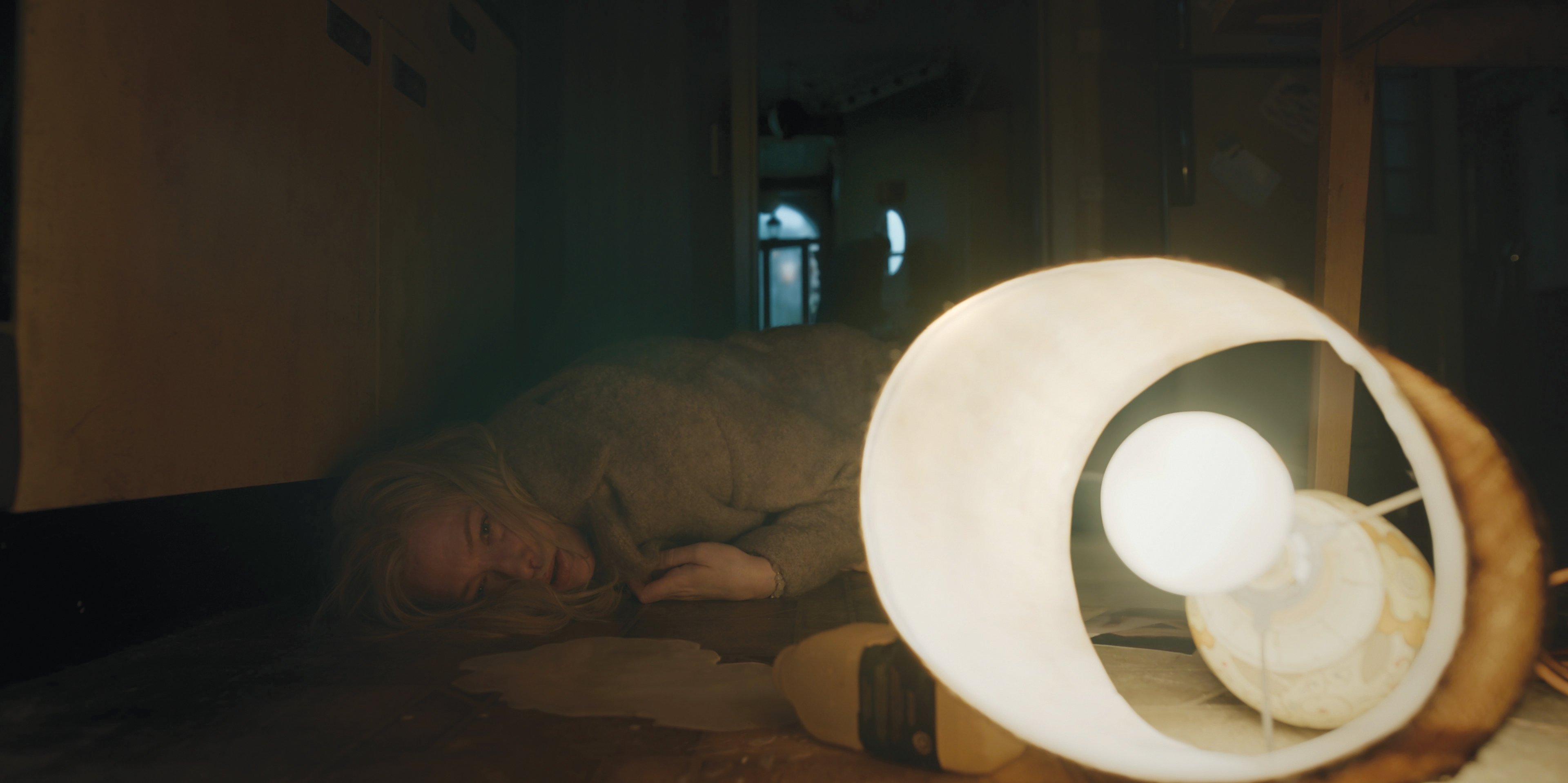
Lubezki found joy in some subtle sophistications, especially in seemingly straightforward scenes. “There are many [moments] where the light is changing,” he says. “Sometimes it changes enough that it’s easy to perceive, and sometimes it’s harder. When Cate’s sitting at the table talking with Sacha, for example, the light is constantly changing in height and angle, and the shadow is changing. The light might start 45 degrees above her eyes, and as the scene is happening, the light gets lower and lower to make Sacha more threatening and to make Cate appear weaker. I hope it makes people feel that maybe her character is about to have a [mental] break.”
Lubezki notes that this moment was illuminated primarily with Arri SkyPanels and Astera Tube lights, and was achieved with cues programmed by desk operator Kirby, as well as via his own improvisational lighting changes, which he made based on his intuition about what the scene demanded. “We would experiment, and the light was constantly in flux — which is something that I’d tried before to a certain extent, like in Gravity [AC Nov. ’13]. But in this series, we took it a little further.”
Conversely, Lubezki continues, a pivotal beach scene required nothing but a willingness to get wet. “No instruments — just me getting in the water with the camera. For some moments, we had a crane, but we didn’t have lighting equipment. And on the beach, the look we captured is mostly due to the Summilux-Cs. All the shots on the beach illustrate that: Handheld, with the sun hitting the lens, you can see the quality of the lens and its clear images of the actors.”
Both Lubezki and Delbonnel used their lenses clean. “For 30 years, I have not been using filtration,” says Lubezki. “I hate to get a great lens and then put a piece of glass [in front].” Adds Delbonnel, “I stopped using filters years ago. I want a very clean image that I’m able to manipulate with Baselight.”
Conjuring the “Real World”
Disclaimer is rooted in a recognizable reality, which posed some challenges in a warehouse-based shoot. “You have to believe it’s a real place,” Delbonnel confirms. “Both sets, Chivo’s and mine, had a garden. Everything’s onstage, and it’s really hard to do. Using [Arri] SkyPanels is okay for an overcast day, but when I was doing the barbecue scene with Kevin, I needed sun. The thing was, the garden was 2,000 square feet! We used a row of 20Ks in very specific positions so they wouldn’t cre¬ate cross shadows. We probably had all the SkyPanels we could find in Europe — and big lights, like 20Ks, 10Ks, Molebeams and Fresnels, for bigger sets.”
Delbonnel notes that Lubezki’s work depicting Catherine and Robert’s kitchen — with its expansive views of a stage-bound garden — managed to capture something incorporeal but essential. “In the opening scene, when Catherine burns a book, there’s a sunrise, and the shot is alive. The light is breathing, as if it was full of air. Chivo is able to bring some reality in a very sophisticated way of lighting. It’s magnificent. When I saw this shot, I was overwhelmed and wished I could have been on set to see how Chivo did it.
“Light is kind of a rhythm in a scene,” Delbonnel adds. “When Kevin is walking in his house, he goes into dark parts of the house. I could have lit those areas to be mostly even, but I thought it was interesting to keep the contrast, to keep the rhythm of light and shadows.”
The story takes place in a huge variety of locations, but the respective homes of the two lead characters were key, demanding a lot of flexibility over such an extensive shoot. “Chivo took more than a month to prelight Catherine’s house,” Delbonnel notes, “and I probably did about the same for Kevin’s. The problem is [that you need] to be able to switch from one mood to another in the day. The rig is very complicated. You have to rig different kinds of lights in different positions so you can switch them off and switch them on if you want an overcast day or a brighter day or a bit of sun. That’s what’s time-consuming when you spend two months shooting in the same room: You need to be able to switch over very fast.”
Adds Lubezki, “In prelighting all of the sets where Catherine was photographed, we’d do all these calculations: which colors we were going to use for dawn, dusk or night; which practicals we were going to use; how we would transition from daylight to night; and so on. So, the key to my approach was to have all these different lights and dimmers, to have different sections of the sky separated, and to very carefully choose the quality of the window materials, like sheers and curtains. We would also produce some lamps in different sizes — one size for daytime, and another size for night. At night, they are larger, so that we could light with practicals and nothing more. All of this took time and some testing, but whenever something didn’t feel right, we would just work to make it better.”
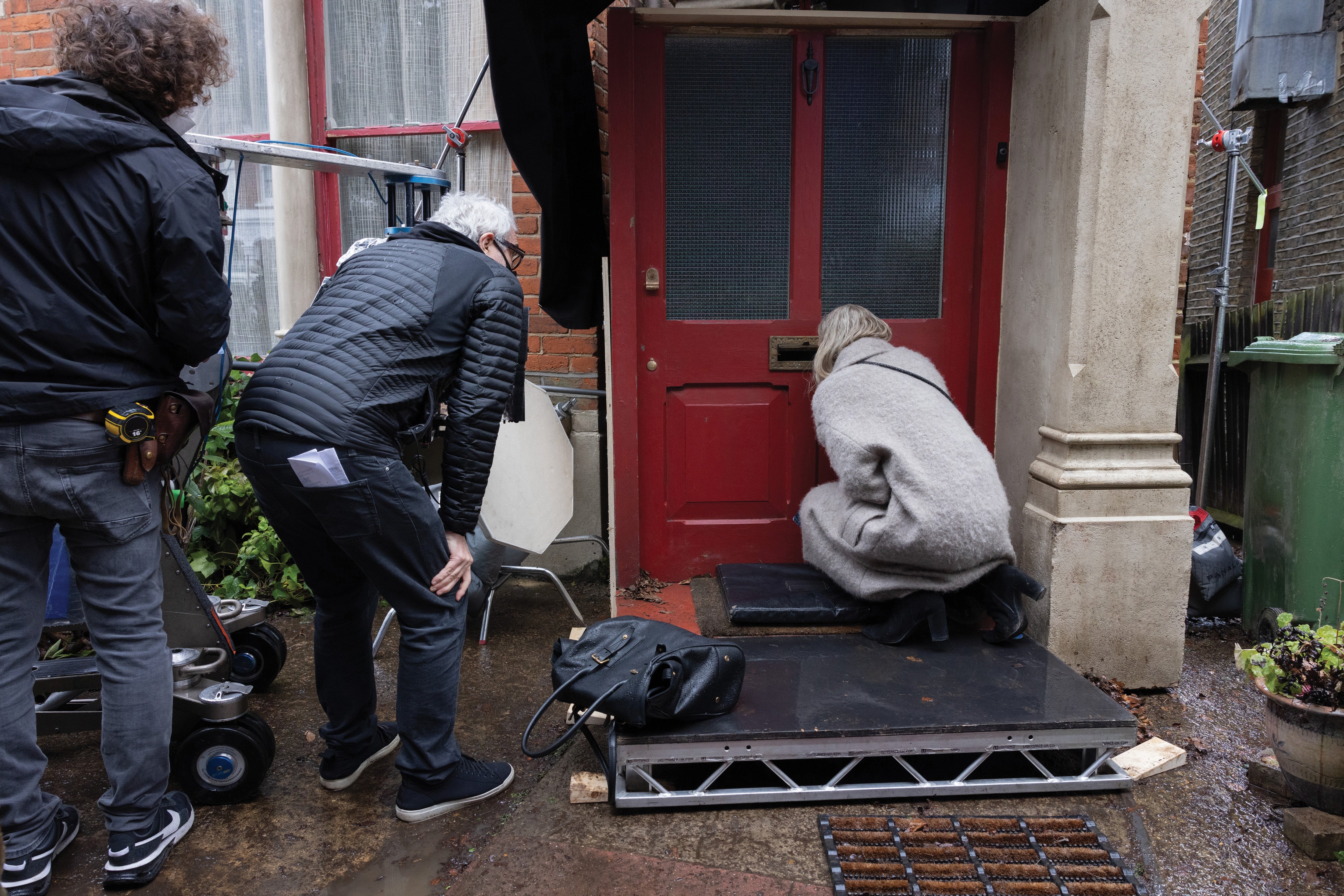
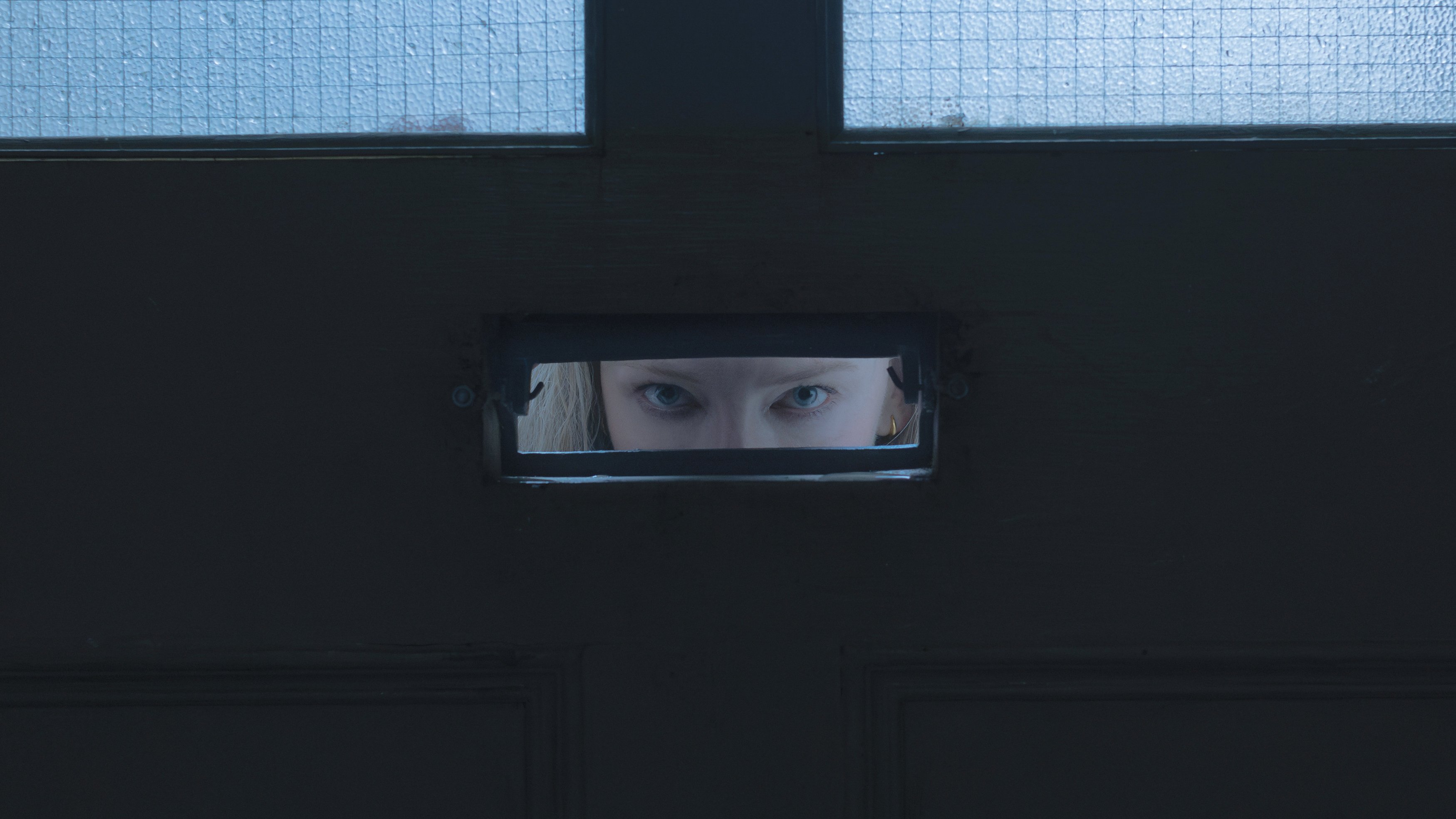
A Welcome Assist
The ambitious schedule eventually led Lubezki to involve another cinematographer on a few scenes. “I asked Mátyás Erdély [ASC, HCA] to give me a hand. He shot the scene when Sacha enters his son’s apartment. It’s a very nice scene because it all happens at dusk, on the verge of underexposure. It wasn’t an easy scene to shoot, because 99 percent of the light in the scenes from Catherine and Robert’s stories comes from outside the windows. On set, there were no lamps inside, aside from practicals.
So, when lighting from outside the windows, the amount of fill light that you’re getting inside has to be calculated. That scene that Mátyás shot is delicate, because it’s dark outside — so, the light that was coming in could not be too bright, and we’d need enough light and enough specific color on the walls to have the fill light, without having to bring fill light from within the apartment, because the [apartment] lights are turned off. Therefore, the distance of the actor from the windows had to be calculated before we went in to shoot. But that was something we were able to do together, and Alfonso and I really enjoyed working with Mátyás. His work was seamless.”
One late change required Erdély to match a changing-lighting environment, with results that Lubezki is keen to recognize. “I did the master of the scene where Cate is cooking the fish, and the light is constantly changing — it goes from midafternoon, with sun shining through the window, till dusk. Then Alfonso realized he had to cut it; the master couldn’t survive as a master. They had to do all these inserts of the food, and the light was in flux. It was one of those cases where the 2nd unit is better than the first, and it made me sick to my stomach with jealousy! It happened once previously in my life, with Rodrigo Prieto [ASC, AMC]. It’s not generosity, it’s jealousy!”
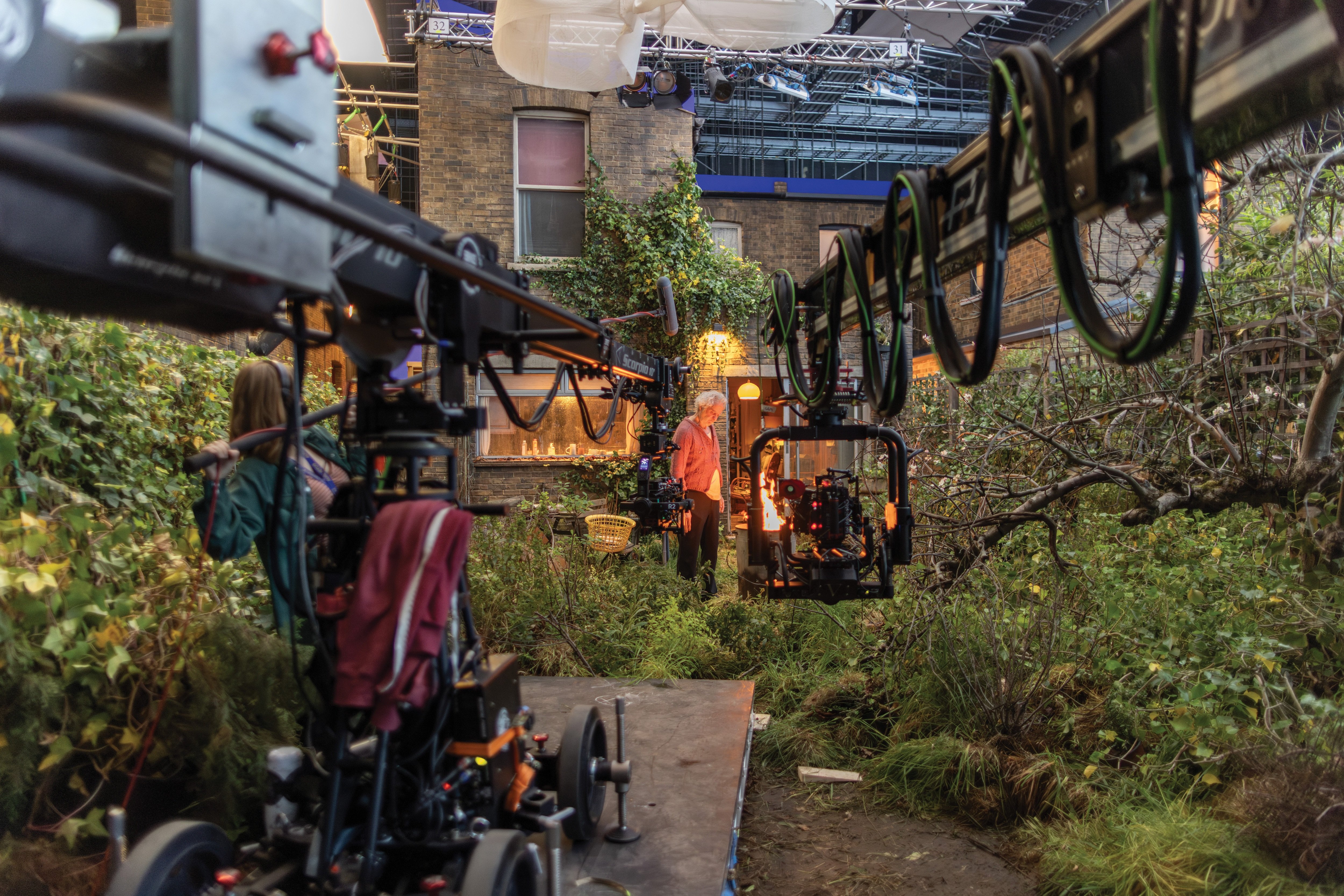
Shared Space
Catherine and Stephen’s inevitable meeting created a unique situation for a team determined to photograph them differently. “Episodes 5, 6 and 7 are where we shared the same hospital set,” Delbonnel says. “I lit it one way and Chivo lit it another, and there was kind of a mismatch. That’s a moment when Stephen and Catherine are in the hospital at the same time, and it was strange to have a difference — but it’s an interesting mismatch, because you could say that a ‘mismatch’ is a different narrative, and the differences between narratives is one theme of the story. Italy is mainly Chivo; I did only a couple of scenes there, where Kevin goes to the morgue and to the beach.”
Delbonnel and Lubezki graded Disclaimer with supervising colorist and ASC associate member Peter Doyle, Delbonnnel’s frequent collaborator. “Alfonso knew him,” Delbonnel says, “but Chivo had never worked with Peter before. They got along very well. I started grading in September in Paris and then went to New York in October, and then back to New York in December, then Chivo took over from L.A. It was a long grade … I graded my part and Chivo graded his, and the judge was Alfonso.”
Lubezki recalls the project as “a massive continuum. This was one continuous job with crewmembers going and coming and having babies. And Covid! We did most of the series wearing masks in the studio, testing twice a week. Eventually, every actor and crewmember had Covid. You’d arrive and find the dimmer operator wouldn’t be there for a week.”
“[The entire project] was crazy,” Delbonnel concurs. “It was an experiment, and it worked, so I would do it again. You need another cinematographer who would like to do this kind of thing, and a director who has some kind of vision to understand what it means. There are not very many directors who have this kind of idea.”
Lubezki has just one regret: “I thought this would be a way for me to go back to school and watch Bruno work. A cinematographer is always learning, but, normally, you don’t have the opportunity to learn from other cinematographers. I was very excited, but a week in, I [realized] I should not see what Bruno was doing if we were trying to create these different points of view. It was better that I stay away … so that dream fell apart. I was not able to see him work!”
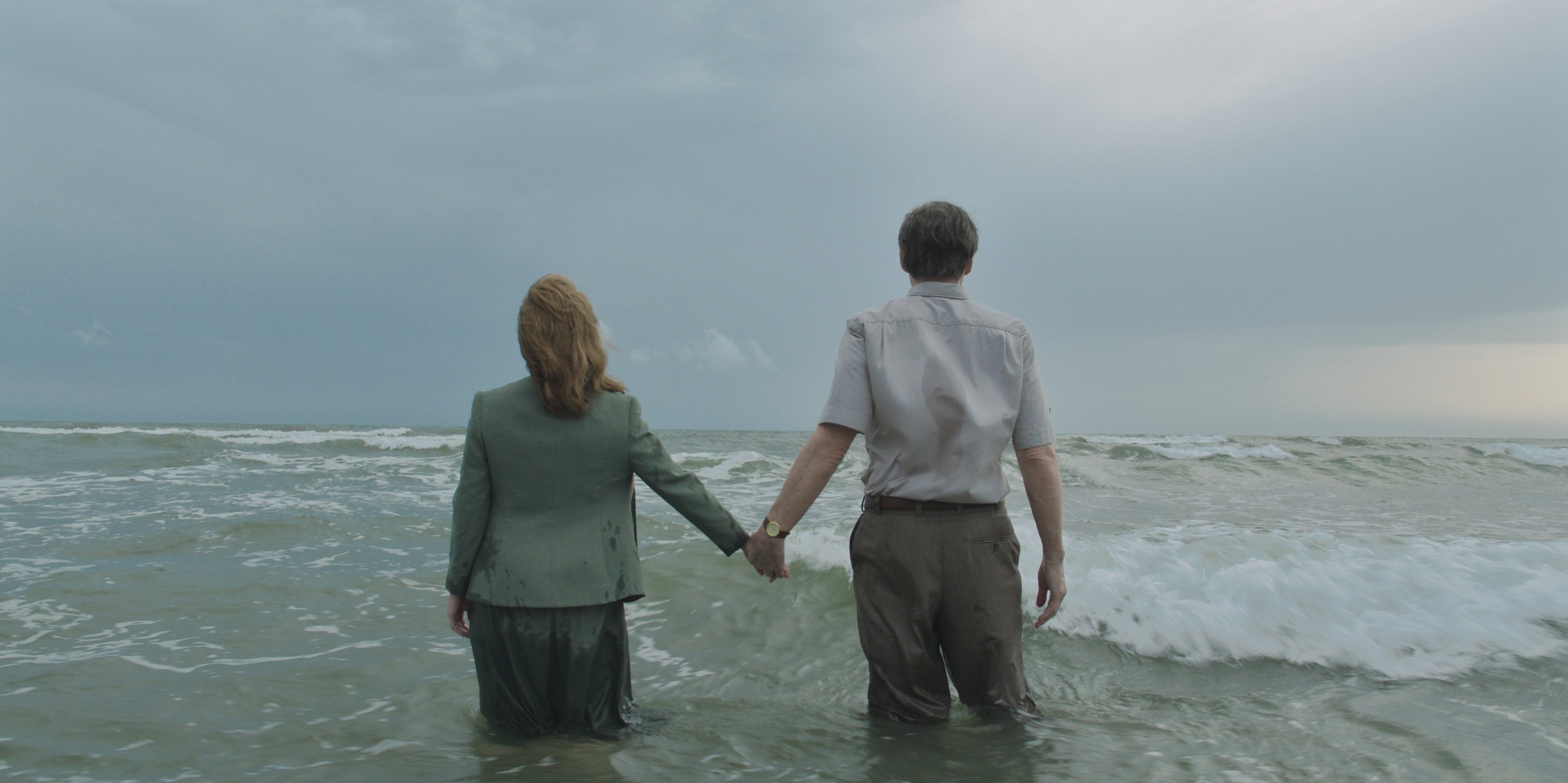
The cinematographers shared an ASC Award nomination for their outstanding collaborative cinematography.
Tech Specs:
2.0:1
Cameras | Arri Alexa 35
Lenses | Arri/Zeiss Master Prime, Leica
Summilux-C, Angénieux zoom, Fujinon zoom

